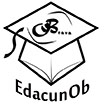Marti's conceptions of Marti's humanistic culture as a socio-cultural heritage present in the Golden Age
Keywords:
value, magazine, literature, humanism.Abstract
The research is based on the realization of a study of the book-magazine La Edad de Oro, from Marti's humanistic vision. Its main objective is to value Marti's conceptions about humanistic culture as a sociocultural patrimony present in this work. The sense of the real that emerges in the work allowed to create and to assure a goal with the young people, to precondition with loving hand the historical relay. Hence the formative purpose, and no longer merely informative, of the children's magazine with which it inaugurates its first high point of radicalization and maturity. A varied bibliography was reviewed in order to make some theoretical reflections. In order to obtain the information, it was necessary to apply the method of text analysis, the main sources of information being literature, philosophical, political, ethical and aesthetic reflections. This research presents as a result this article on Martian conceptions about the humanistic culture seen through The Golden Age that allows its knowledge and significance for the Cuban and universal culture, since this constitutes in itself a project of cultural development.
Downloads
References
Díaz, H. (2014). Con José Martí en la memoria. La Habana: Pueblo y Educación.
Gallego, E. (1999). Por qué y para quién se escribe La Edad de Oro. La Habana: Academia.
Martí, J. (1972). La Edad de Oro. La Habana: Gente Nueva.
Rodríguez del Castillo, M. A. (2013). Cómo leer la obra de José Martí. La Habana: Pueblo y Educación.







.png)



.png)



.png)





















